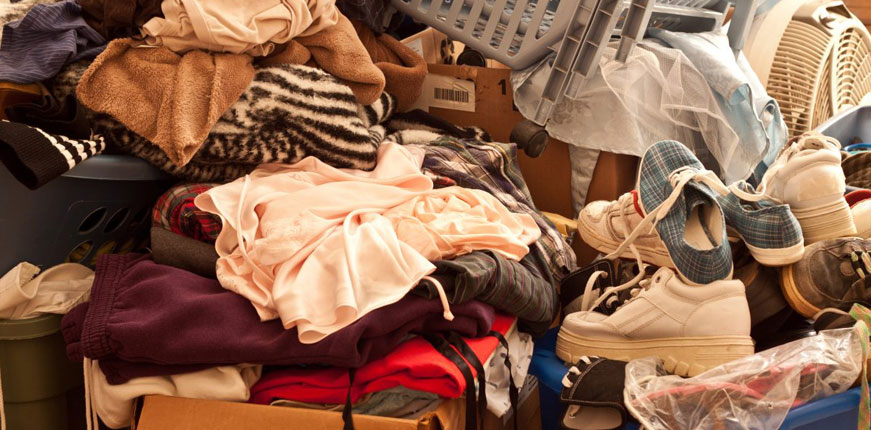
Whilst on annual leave recently, I finally took the opportunity to sort through my sons stuff. I still had all of his baby clothes mixed in with the clothes he is currently in. I was going to pop them in a garbage bag or cardboard box and put them in the shed. However, after going into the shed I discovered that all of the cardboard boxes we had in the shed had been chewed to pieces by rats and mice! I really wanted to keep most of his baby clothes, just in case, so I researched the best way to store and protect clothes whilst they are in storage in the shed.
After scouring the internet I discovered that most of them advise the following 6 simple steps and measures you should take when storing clothes long term.
1. Wash your clothes before storing
Wash and iron your clothes before storing. Surfaces stains and dirt will set into the clothing overtime and when you do finally get them out of storage to use again the stain will be difficult to remove. Dirty clothing can also attract vermin and insects which may also damage your clothing. Wash all items as per their washing instructions and any dry cleanable items should be dry cleaned prior to storing. Make sure the clothes are rinsed properly before drying and storing to ensure that all bleaches, chemicals and detergents are washed out. This will not only make sure that your clothes are safe during storage, they will also be clean and ready to wear when you need them.
2. To vacuum seal or not to vacuum seal
There is a large range of vacuum seal bags out on the market, which are great space savers. There is a lot of speculation out there, however, that over a long period of time, storing your clothing in these bags could damage your clothes. The reasoning is that most natural fiber cloth needs air to maintain its structure and integrity and that by sucking all of the air out of the bag, you are compressing the garments and compressing the fibers. When removed from these bags, it takes a long time for the fibers to uncompress with one person with a PhD in Fiber and Polymer Science even suggesting that the item will take the same amount of time to uncompress to the amount of time it was in the space saver bag. I have used these bags in the past for seasonal clothing, thus the articles are only in the bag for a period of months and not years, and I have not had a problem. For any heirlooms, real expensive or sentimental items I would probably not run the risk.
3. Say no to plastic bags and cardboard boxes
Air tight plastic containers with a lid is the best thing to pack your clothes into. This will keep your clothes dry and stop the growth of mould and mildew, in most cases. If using plastic containers, ensure they are clean, dry and line them old (but clean) cotton sheets. Avoid plastic bags as these can trap moisture and cause mildew to form or cause the yellowing of fabrics. Packing your clothing in a cardboard box will not protect them against vermin as rats and mice can easily chew through the cardboard. Again depending on the expense and sentimental value of the item, acid free boxes and tissue paper should be used especially for heirloom items as not all plastic boxes are safe as they release chemicals which could have subtle to grossly negative effects on the clothing.
4. Mothballs
Not only do mothballs leave your clothes smelling terrible, they are not 100% effective and can be potentially dangerous if found bye children or pets. A much more appealing alternative are the natural wooden cedar balls. They not only smell better, they are just as effective as moth balls and are even more effective if used in conjunction with all of the tips mentioned. When using either moth balls or wooden camphor make sure that they not placed on the garments and are placed at the top of your storage container for further protection.
5. Clean, cool, dark and dry
The atmospheric conditions and environment you are storing your items in can cause damage if extreme. Ideally it is suggested that clothing should be stored in conditions that do not exceed 23°C with a relatively humidity of 55%. However, I would only follow this guide line if I was storing any heirlooms or expensive sentimental items. As long as the space is clean and protects the box the items are stored in from the elements they should be safe. For people like me that are storing items in their own personal space, just keep in mind that attics and garages can be home to fuels, grease and many other flammable items and may be damp and have vermin unlike a self storage facility.
6. Check and do not protect!
It is important to check on your items in storage, wherever and whatever you are storing. If you check your items once a year, you will minimize the risk of the items getting damaged and may save them before they do. This point is especially important to me as I forget everything and I will forget that I have even stored the clothing in the first place!
credit : www.storeurstuff.com.au

